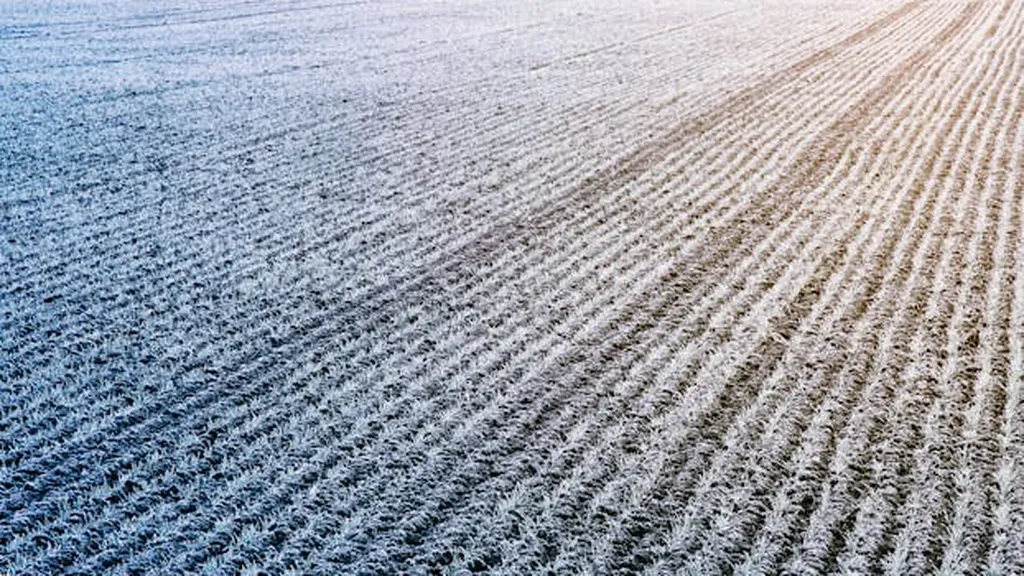In the heart of India, where agriculture is the backbone of the economy, a groundbreaking study led by Sarbjeet Kaur from the Department of Botany at Panjab University is paving the way for more resilient chickpea crops. The research, published in the journal Scientific Reports (translated to English as “Scientific Reports”), delves into the world of wild chickpea accessions and their remarkable resilience to cold stress, offering promising avenues for breeding programs aimed at enhancing crop yields in cooler climates.
Chickpea, a vital legume crop, is highly sensitive to temperatures below 20/10 °C during its reproductive phase, leading to substantial losses in flowers, pods, and overall crop yields. This sensitivity poses a significant challenge for farmers, particularly in regions prone to unpredictable weather patterns. Kaur and her team set out to address this issue by evaluating 36 wild accessions of three Cicer species—Cicer judaicum, Cicer pinnatifidum, and Cicer reticulatum—under cold stress conditions.
The study, conducted over two consecutive years, focused on yield, reproductive, physiological, and biochemical traits. The results were categoric: six accessions of Cicer judaicum (ILWC 256, ICC 13852, ILWC 263, ILWC 20, ILWC 223, and ILWC 30) emerged as cold-tolerant, while the rest were deemed cold-sensitive. “The cold-tolerant accessions exhibited lower impairment of physiological processes compared to the cold-sensitive ones,” Kaur explained. “This included lower tissue damage and electrolyte leakage, and higher chlorophyll content, carotenoid content, chlorophyll fluorescence, and leaf water content, resulting in higher photosynthetic efficiency and carbohydrate accumulation.”
At the biochemical level, the tolerant accessions demonstrated significantly higher amounts of cryoprotectants and enhanced activities of enzymatic and non-enzymatic antioxidants, leading to substantially lower levels of reactive oxygen species. “The accumulation of proline and trehalose in these accessions was particularly noteworthy,” Kaur added. “These compounds play a crucial role in protecting cells from cold-induced damage.”
The implications of this research are profound for the agricultural sector. By identifying and utilizing these cold-tolerant wild chickpea accessions, breeders can develop new crop varieties that are better equipped to withstand low temperatures. This not only promises to enhance crop yields but also ensures food security in regions where chickpea is a staple crop.
Moreover, the study’s findings could have broader applications in the energy sector. As the world shifts towards more sustainable and renewable energy sources, the development of cold-resistant crops can contribute to bioenergy production. Chickpea, being a legume, has the potential to improve soil health and reduce the need for synthetic fertilizers, making it an attractive option for bioenergy crops.
The research conducted by Kaur and her team is a testament to the power of scientific inquiry in addressing real-world challenges. As climate change continues to impact agricultural practices, the need for resilient crops becomes increasingly urgent. This study not only sheds light on the mechanisms of cold tolerance in wild chickpea accessions but also opens up new possibilities for breeding programs aimed at enhancing crop resilience.
In the words of Kaur, “This research is just the beginning. The wild chickpea accessions exhibiting high seed yield under cold stress are promising candidates for breeding programs aimed at cold tolerance. By harnessing the natural resilience of these accessions, we can develop crops that are better adapted to the challenges posed by a changing climate.”
As we look to the future, the insights gained from this study will undoubtedly shape the development of more resilient and sustainable agricultural practices, ensuring food security and contributing to a more sustainable energy sector.

